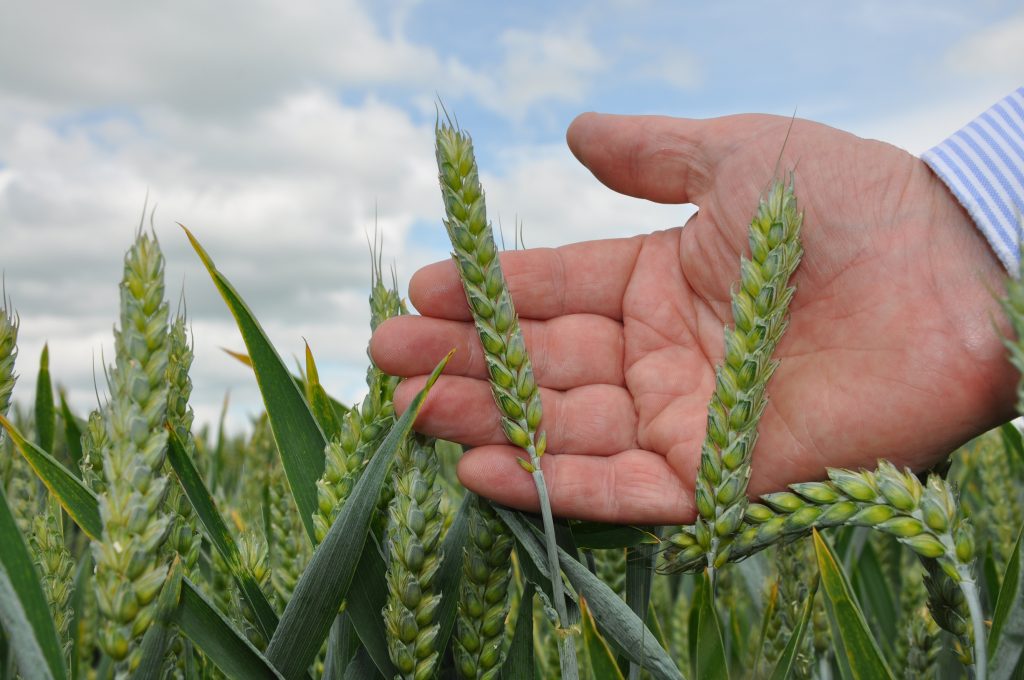Wholecrop cereals could be ‘no brainer’ for livestock farmers facing tight silage stocks
27th July 2016
Low cereal prices could mean making wholecrop cereal silage is a ‘no brainer’ for topping up this season’s tight grass silage stocks on dairy and other livestock farms, says Ecosyl
Low cereal prices could mean making wholecrop cereal silage is a ‘no brainer’ for topping up this season’s tight grass silage stocks on dairy and other livestock farms, says Ecosyl silage specialist, Derek Nelson.
This, coupled with the drive to maximise use of home-grown forages to reduce reliance on bought-in feeds, makes wholecrop an obvious option, he maintains.
“We’ve seen in the past that wholecrop cereals have proved an ideal silage where grass yields or quality levels have been low,” says Mr Nelson.
“With cereal grain prices still relatively depressed, if you are growing cereals and need to make up for grass silage shortfalls, it makes sense to consider ensiling at least some as wholecrop this season – rather than harvesting the entire crop as mature grain.
“Wholecrop wheat can deliver 12-15 tonnes of dry matter per hectare, which is more than three cuts of grass in a dry year. Also, including wholecrop as part of a mixed forage diet can increase dry matter intake, which is important for high-yielding herds. Even if you aren’t growing cereals, you can often buy standing crops.”
As with all silage, Mr Nelson says getting the maximum feed value from wholecrop demands effective preservation – with many farmers opting to make fermented wholecrop as a low cost and straightforward method.
“Fermented wholecrop is a highly palatable and nutritious forage and can have starch contents as high as 35% dry matter. Also, harvest can often be slotted in immediately after second cut grass – which means you can assess grass silage stocks before deciding how much wholecrop to make.
“Ideally, wholecrop for fermenting should be harvested at 45-50% dry matter, which is typically three to four weeks before combining when the grain is at the ‘soft Cheddar cheese’ stage but with no ‘milk’ detectable.
“Because of its relatively high dry matter, wholecrop can be prone to aerobic spoilage during storage and at feedout, shown as heating. So it is well worth considering a dual-acting additive. A new product Ecocool, for example, which was launched last year for exactly this purpose, contains the bacteria Lactobacillus plantarum strain MTD/1 for efficient fermentation plus Lactobacillus buchneri PJB/1 for reduced heating and spoilage.”
When planning wholecrop harvest, Mr Nelson says, cutting at 45-50% dry matter provides a good balance between providing moisture and sugars for fermentation and achieving a good starch content in the grain to maximise feed value. However, be careful not to miss the optimum harvest window, he says, since cereals mature rapidly, and, once dry matter reaches 45%, it can increase in hot weather by 2% a day.
“You can still achieve a good fermentation at dry matters of up to 50%, particularly with a proven silage inoculant. Also, it is possible to produce well-fermented wholecrop below 45% dry matter, but early harvesting will affect yield and starch levels.
“Chop length is also important. For optimum rumen conditions, diets must contain sufficient effective fibre. Aim for around 20 mm,” Mr Nelson adds.

